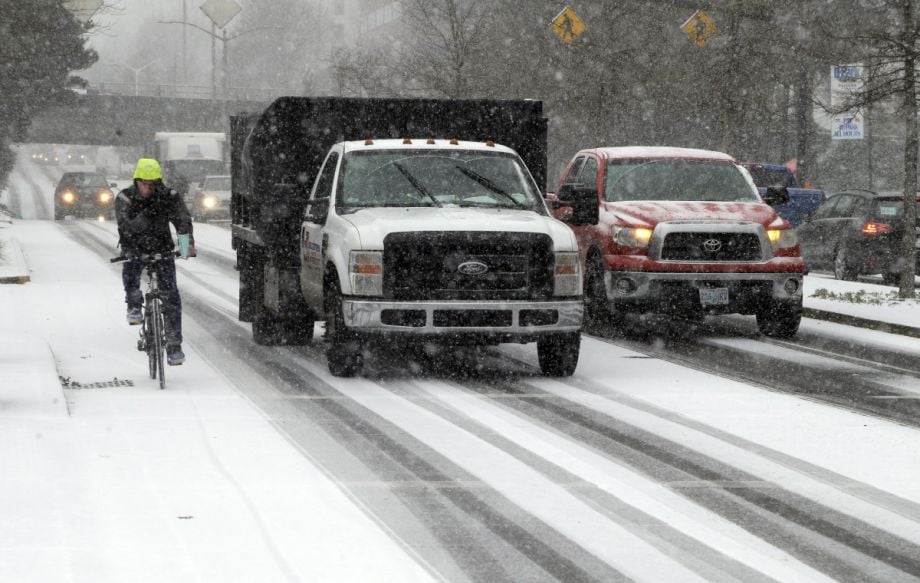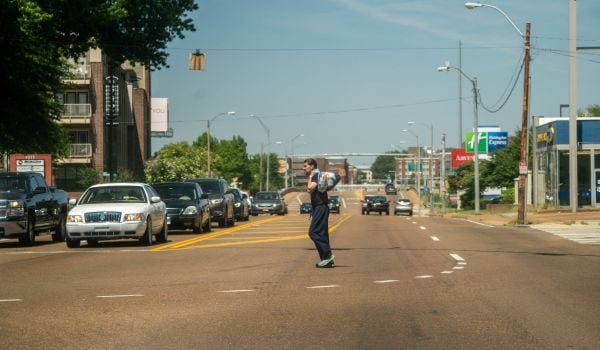It’s been a bad year for traffic deaths in Portland. Just last week, in separate incidents on the same night, drivers hit and killed two people walking on SE Division Street, a busy arterial. Their deaths bring the Oregon city’s 2016 traffic fatality total to 40, the most for Portland since 2003 and slightly more than the 20-year average of 36 annual traffic fatalities.
Portland hopes to get that number of traffic deaths to zero by 2025. In June 2015, the city adopted a “Vision Zero” resolution, but did so without a specific plan for accomplishing the goal. Nearly 18 months later, the Portland Bureau of Transportation has released a Vision Zero Action Plan. Adopted unanimously by the city council on Dec. 2, the plan lays out short-term and long-term engineering, education, and enforcement goals.
It was created with input from a task force and advisory committee. The task force members represented PBOT, the Oregon Department of Transportation, police and fire departments, the auto and trucking industries, EMTs, low-income advocates, accessibility advocates, an African-American community group, an Asian-Pacific Islander community group, elderly advocates and more.
“In some ways this was a very bottom-up process … . We took some criticism for taking a year [to produce the action plan], but it’s going to be that much stronger,” says Rob Sadowsky, executive director of the Bicycle Transportation Alliance and a member of PBOT’s Vision Zero task force.
The action plan maps out a “high crash network” of the most dangerous streets in Portland (according to the plan, 57 percent of deadly crashes occur on just 8 percent of streets) and establishes 32 items for the city to implement over the next two to five years. They include plans for infrastructure and design changes, curbing impaired driving, stopping speeders, and improving education and outreach. It also includes metrics by which to measure their progress on everything.
The plan says, “Streets should discourage dangerous driving by design. The safest streets slow down traffic, provide separation between modes, and provide visual cues that make it clear that people using different modes share the space.” It sets a goal of building capital safety improvements on two segments and five intersections of the high crash network each year for the next two years.
PBOT also intends to create a targeted DUI enforcement program in the city’s “entertainment district” by working with on-demand transportation services, public transit and bar owners. They’re also going to start allowing pre-payment for morning parking meters in certain neighborhoods to encourage people to leave their cars in place after going out.
To curb speeding and dangerous driving, they’ll implement a speed camera pilot program on four high-crash corridors and expand the city’s red light camera program.
Sadowsky says he is perhaps most excited about how the action plan addresses racial equity. “We were able to put together a really diverse group of people including communities that had never been at the table around transportation before.”
Equity-minded safer streets advocates have criticized Vision Zero’s emphasis on traffic enforcement because people of color get stopped by police at disproportionate rates to white people (a problem prevalent in Portland). And, as the high-profile deaths of Philando Castile, Walter Scott, Terence Crutcher and many others illustrate, those traffic stops can escalate in fatal ways. So there is concern that Vision Zero traffic enforcement could have unintended consequences in communities of color.
But, at least on paper, PBOT is taking steps to address the issue. The plan states that it will, “address the disproportionate burden of traffic fatalities and serious injuries on communities of concern, including people of color, low-income households, older adults and youth, people with disabilities, people with limited English proficiency, and households with limited vehicle access.”
Communities of concern is the term regional transit provider TriMet uses to identify areas of the city with high rates of the aforementioned characteristics.
The plan continues to say that PBOT will, “prioritize filling gaps in infrastructure where those gaps contribute to fatalities and serious injuries, or limit the transportation options of communities of concern” and that it will, “not result in racial profiling.”
Sadowsky says concerns about enforcement are part of the reason the plan calls for using speed cameras instead of increasing the number of officers patrolling for speeders.
“We need to do more on enforcement. But, the first step is to deal with police brutality and profiling. Then we can deal with issue of enforcement,” he explains.
Of course police reform is difficult and beyond the scope of PBOT’s plan. Sadowsky says, “Changing police is not an easy one, two, three solution. But [the police department] came to the table. They listened. They committed to the group that they’re interested and willing to work on these issues.”
As is often the case, laying out the plan and finding ways to pay for it remain two separate things for PBOT. They have some funding in place, but not enough to pay for everything. In fact, several of the near-term items in the plan are about finding sustainable funding sources for Vision Zero.
In the meantime, the city plans to use a portion of its gas tax revenue. And thanks to a successful amendment from Portland Commissioner Amanda Fritz, some of the city’s recreational marijuana tax revenue will go toward funding Vision Zero initiatives.

Josh Cohen is Crosscut’s city reporter covering Seattle government, politics and the issues that shape life in the city.
Follow Josh .(JavaScript must be enabled to view this email address)





_600_350_80_s_c1.jpg)



_on_a_Sunday_600_350_80_s_c1.jpeg)






